Neighborhood Public Art: Fenway
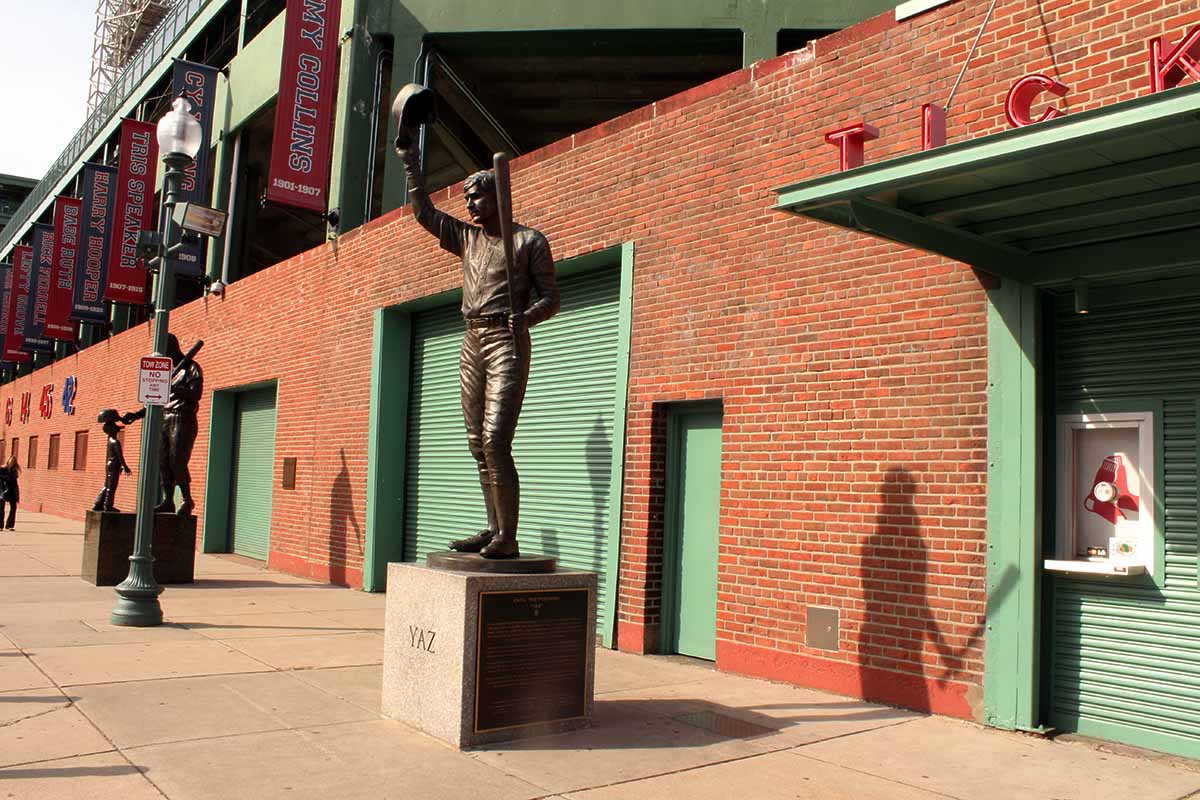
Sculptures of Carl Yastrzemski and Ted Williams stand outside Fenway Park. / Photo by Anna Buckley
The Fenway neighborhood not only has a wealth of culture—from the Museum of Fine Arts to the Isabella Stewart Gardner Museum to the Back Bay Fens to Fenway Park—but also a breadth of characters on display. They’re mainly cast in bronze and are worth seeing for yourself.
Here, we highlight a few must-see public art works in Fenway:
“Appeal to the Great Spirit” by Cyrus Edwin Dallin (1909)
Museum of Fine Arts, at Huntington Avenue
Artist Cyrus Edwin Dallin, born in Utah Territory, is best known for his sculptures of Native Americans. “Appeal to the Great Spirit,” which stands boldly at the entrance to the MFA, is a life-size statue that presents a chief mounted on his horse, arms spread wide, communicating with a higher entity. In Dallin’s own words, this is the “final appeal to the Great Spirit for peace with the white man” after “his signal of peace…had been rejected.” This is the fourth sculpture in a series of equestrian sculptures, called “The Epic of the Indian,” that Dallin completed between 1890 and 1909. To see this sculpture in person is to experience a moment of serenity and power.
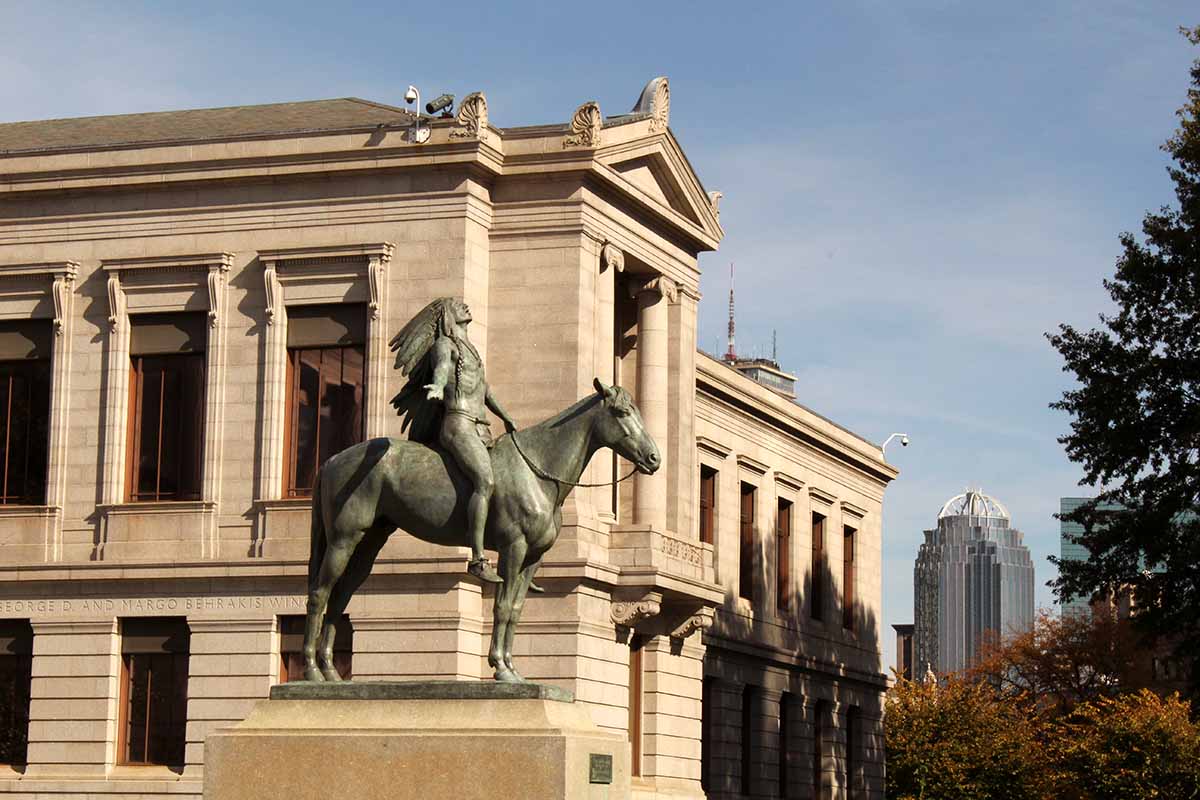
Edwin Dallin’s sculpture stands at the entrance to the Museum of Fine Arts. / Photo by Anna Buckley
“Walking Man” by Jonathan Borofsky (2000)
Museum of Fine Arts, at Museum Road
Jonathan Borofsky, a New England native who trained at Carnegie Mellon University and Ecole de Fontainebleau in France, is best known for his massive public sculptures depicting the human form in motion. One of his most famous series of works is the “Hammering Man,” a collection of monumental kinetic sculptures installed in various cities around the world. The most prominent of the bunch is a sculpture towering more than 68 feet tall for the new Messeturm building in Frankfurt. On display above the main parking lot at the MFA is a smaller version of Borofsky’s work: a walking man dressed in a red shirt and blue slacks.
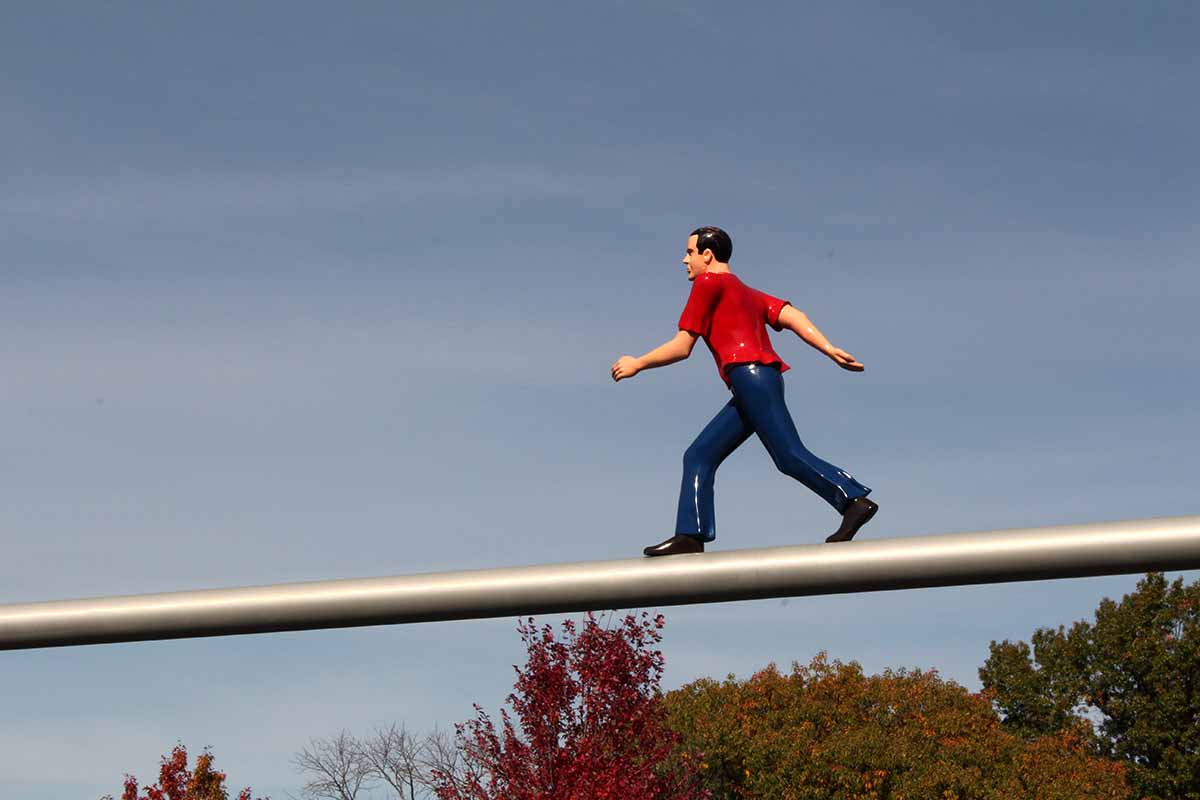
A Jonathan Borofsky original is poised above the parking lot at the Museum of Fine Arts. / Photo by Anna Buckley
“Day and Night” by Antonio Lopez Garcia (2008)
Museum of Fine Arts, State Street Entrance
Famous realist Spanish painter and sculptor Antonio Lopez Garcia is known for his lifelike imagery. “Day and Night,” a two-piece sculpture set, depicts two baby heads, one with open eyes and the other with closed eyes, standing at 96 inches tall, 77 inches wide, and 95 inches deep. These sculptures are breathtaking, in part because of their oddity, but mostly due to their precise detail, from the texture of the closed eyelids to the innocence of the expressions.
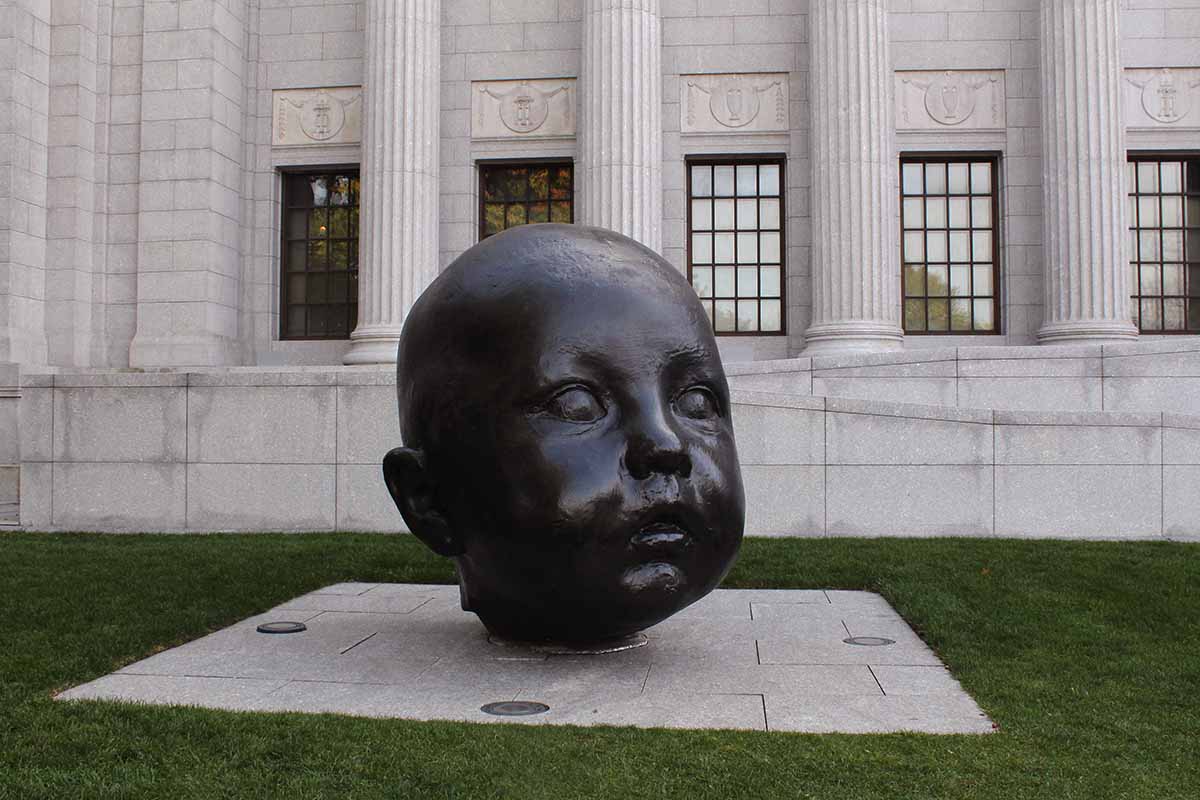
The first of a pair of baby heads by Antonio Lopez Garcia. / Photo by Anna Buckley
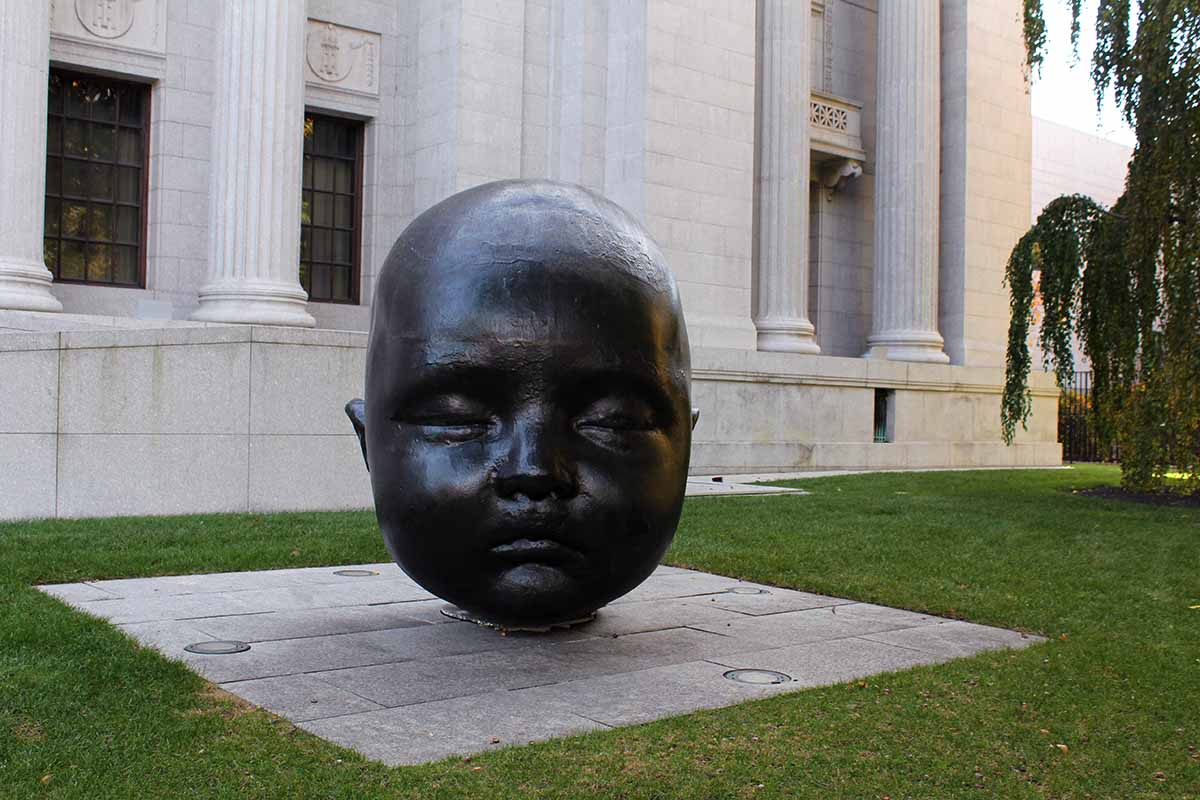
The second baby head in the series by Antonio Lopez Garcia. / Photo by Anna Buckley
“John Endecott” by Ralph Weld Gray and Carl Paul Jennewein (1937)
Forsyth Park
John Endecott, who was born before the turn of the 17th century and died in the 1660s, was the first governor of the Massachusetts Bay Colony, serving for 16 years—the longest period of service of any colonial governor. He stands in granite form in Forsyth Park. He also served as a magistrate and soldier, holding positions in civil, judicial, and military offices. The statue is both impressive and serene, with Endecott forever poised in quiet confidence.
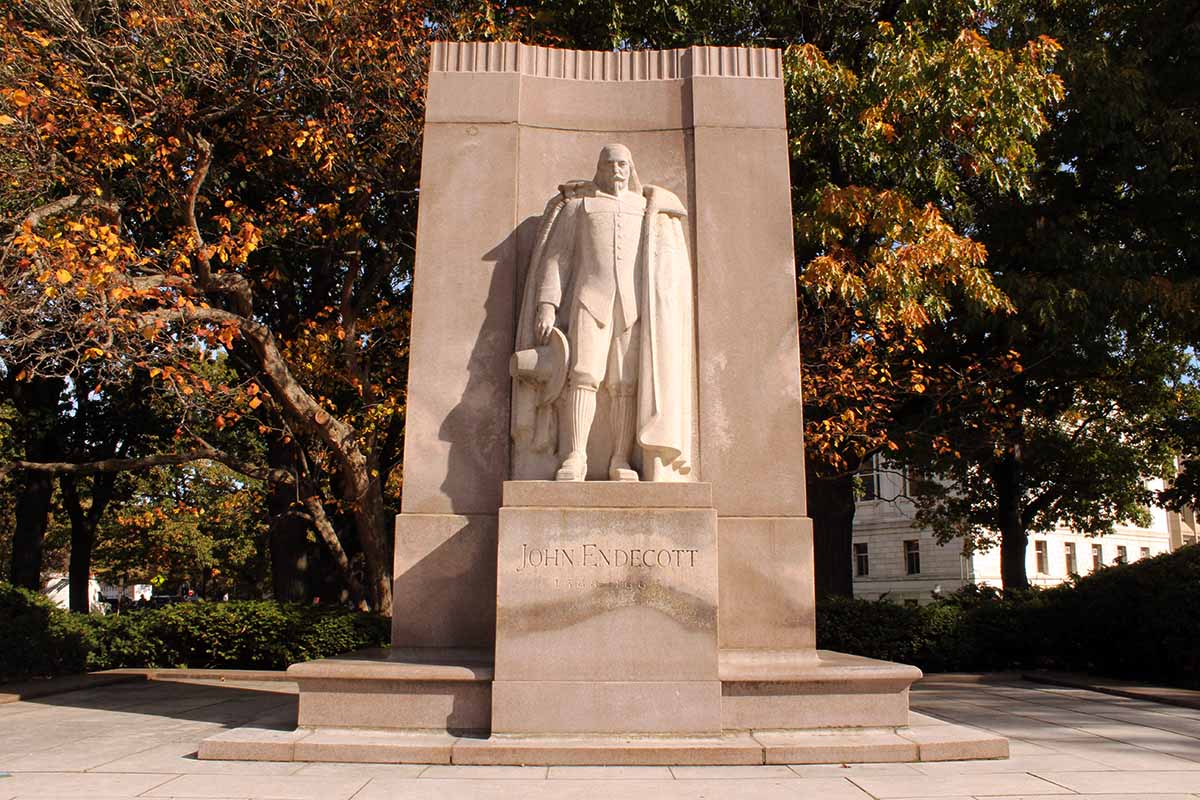
The first governor of the Massachusetts Bay Colony stands memorialized in marble. / Photo by Anna Buckley
Japanese Temple Bell, gifted by Manpukuji Temple-Sendai (1675)
Back Bay Fens
This 450-pound bell once rang in religious ceremonies at the Manpuku-ji temple in Sendai, Japan. During World War II, church bells were removed to be melted down into artillery, resulting in the loss of 95 percent of all temple bells. Sailors from the USS Boston brought this particular bell, which they found during the American invasion of Japan, back in 1946. Eventually, bells that had been smuggled into America were returned to Japan as diplomatic gestures. In 1953, when the U.S. attempted to return this specific bell, the Temple Believers group in Sendai donated the bell to Boston in the spirit of peace and friendship.
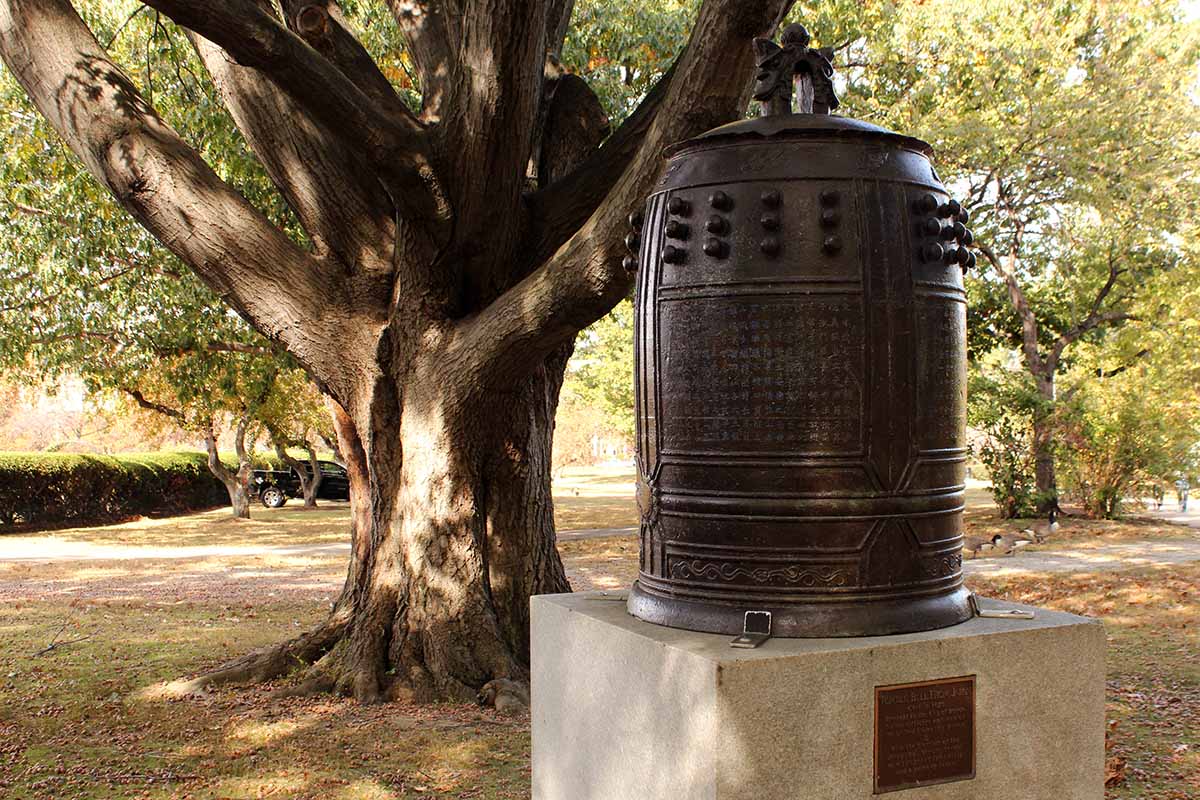
In 1946, Captain Marion Kelley of the USS Boston took this bell from Sendai. / Photo by Anna Buckley
World War II Memorial by John Francis Paramino and Tito Cascieri (1949)
Back Bay Fens
Administered by the City of Boston’s Office of Cultural Affairs and erected 1949, the World War II Memorial in Fenway depicts a standing, winged female figure, representing Victory, carrying a sword and branch in her hands, crowned with laurel. Behind her are 27 bronze plaques listing those who died in battle. The memorial is impressive and beautifully haunting, surrounded by white marble and numerous benches upon which one can honor the lives lost.
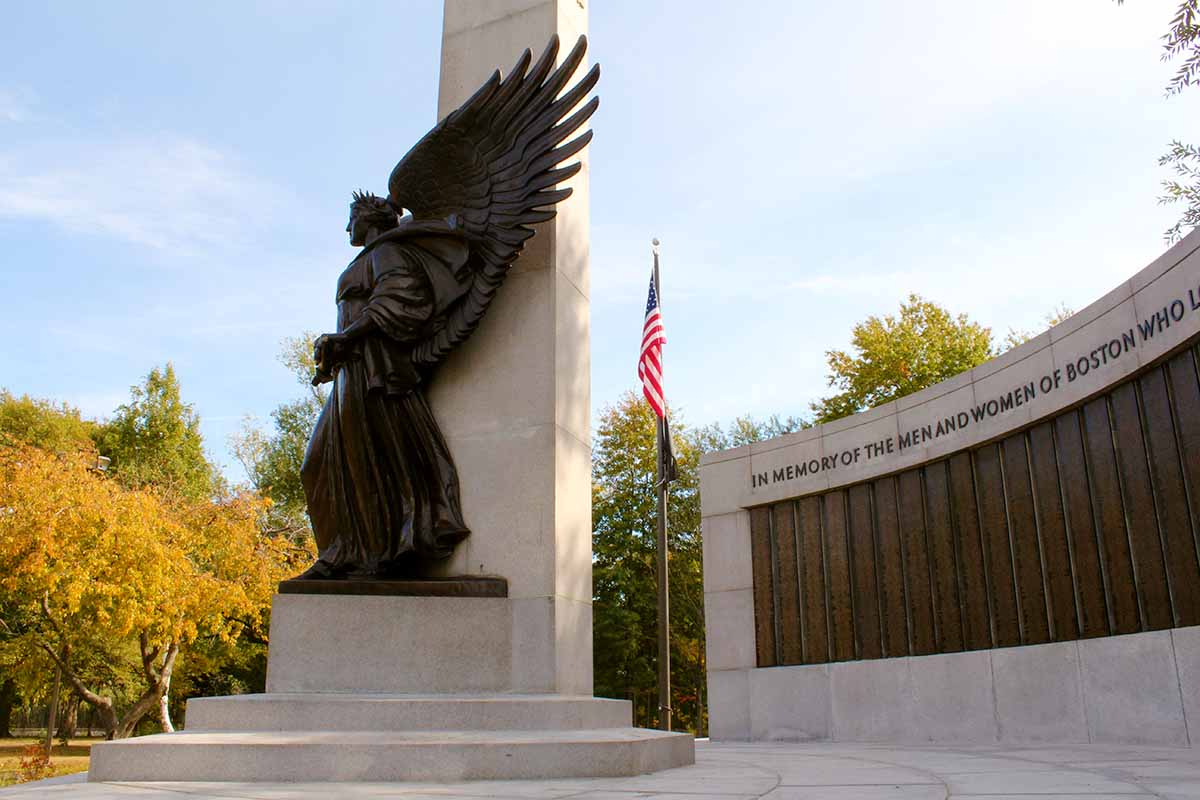
World War II Memorial in Fenway honors the lives lost. / Photo by Anna Buckley
“Dream Catching: Phil David Fine Memorial” by Wen-Ti Tisen (2004)
Boston Arts Academy
Eighteen bronze silhouettes and several mirror-like stainless steel plates adorn the outer walls of the Boston Arts Academy, all part of “Dream Catching,” a memorial to Phil David Fine—founder of The Fund for the Arts to support the creation of new public artworks. The silhouettes come from prehistoric and folk art scenes, chosen by the artist, Wen-ti Tsen, and Academy students to honor ancient art. Conversely, the mirrors represent possibilities for future works.
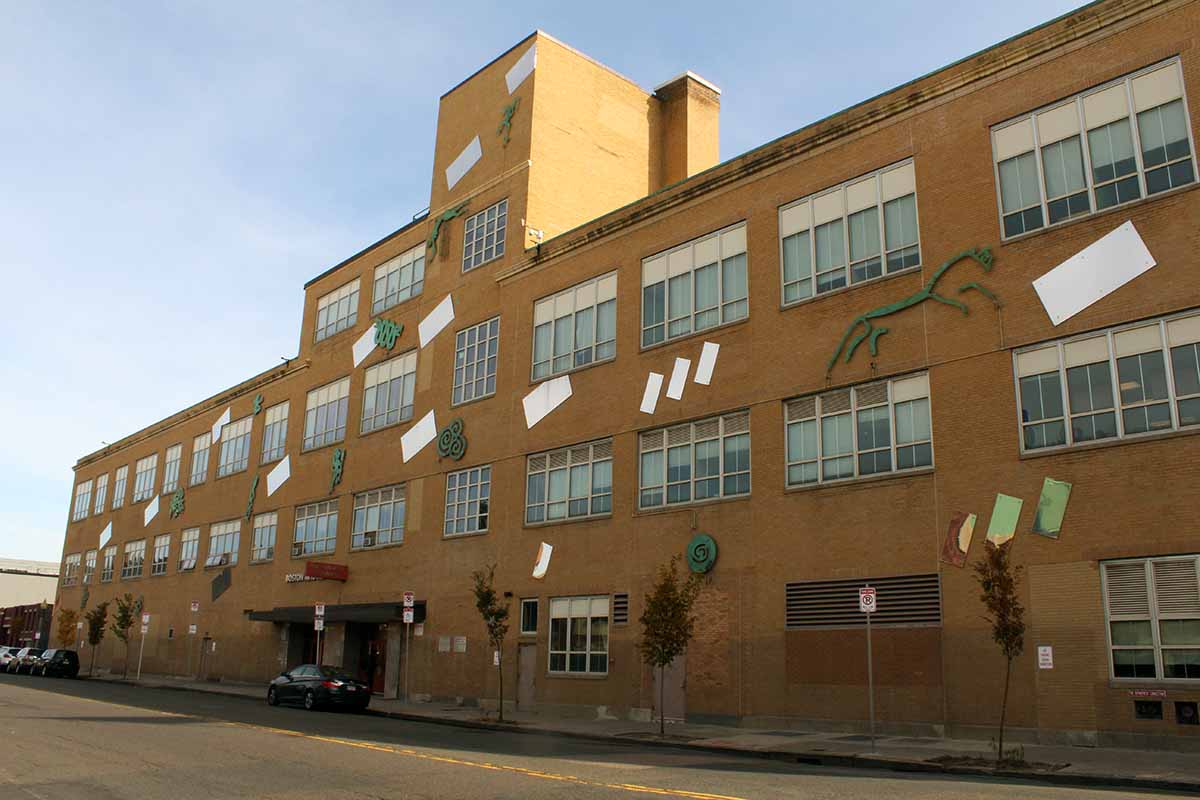
A vast memorial to Phil David Fine adorns the front of the Boston Arts Academy. / Photo by Anna Buckley
Carl Yastrzemski Memorial by Antonio Tobias Mendez (2013)
Intersection of Ipswich and Van Ness streets
Carl Yastrzemski, known lovingly by his loyal Red Sox fans as Yaz, is memorialized in bronze outside of Fenway Park thanks to Antonio Tobias Mendez. “I proposed three different poses, weighing heavily toward that one because I knew Yaz liked it. It really came down to, how do you pay tribute to the man? That seemed the most fitting, because it shows him giving back to the fans,” Mendez told the Boston Globe before the statue’s unveiling.
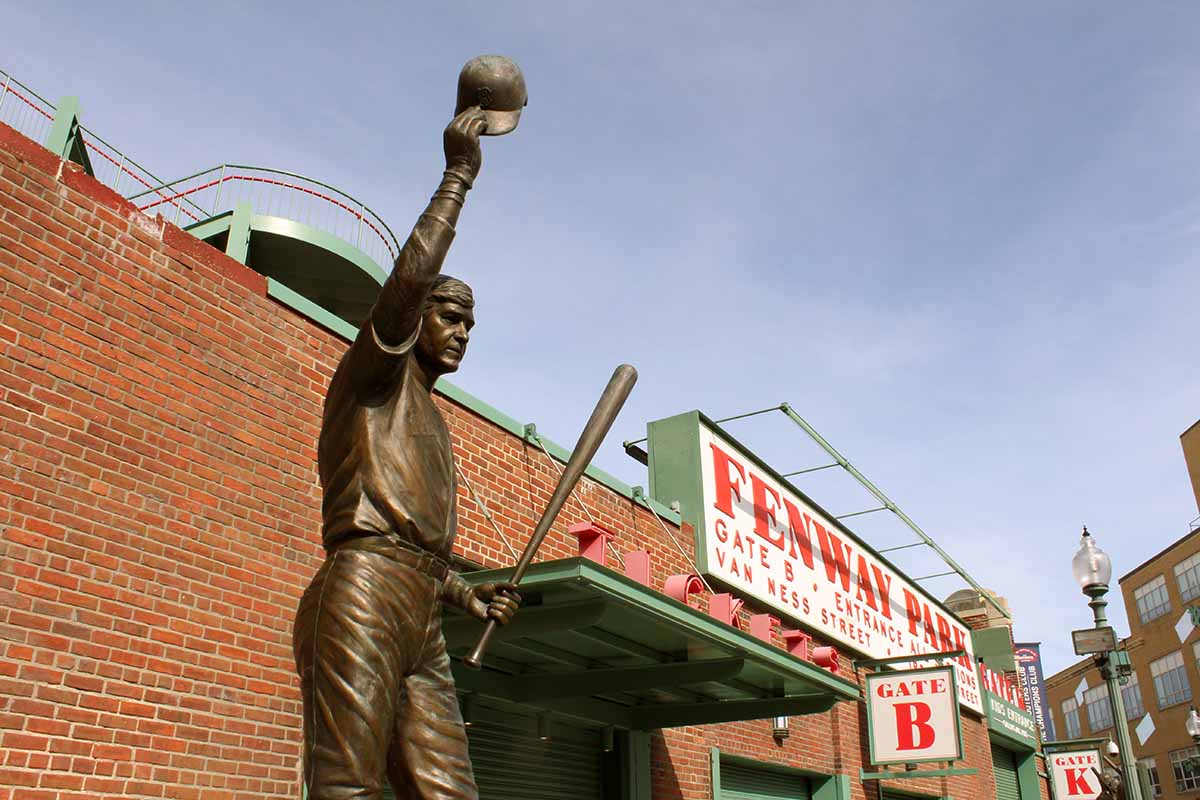
Antonio Tobias Mendez’s sculpture of Yaz. / Photo by Anna Buckley
“Ted Williams” by Franc Talarico (2004)
Behind Fenway Park
Frequently referred to as the greatest hitter who ever lived, Ted Williams’ life-size bronze portrait outside Fenway Park commemorates his work off the field for the Jimmy Fund and the Dana Farber Cancer Institute. Commissioned by Williams’ friend, Hank Evanish, artist Franc Talarico completed the statue in 2004. The tender moment, captured forever, depicts Williams placing his cap upon the head of a small child.
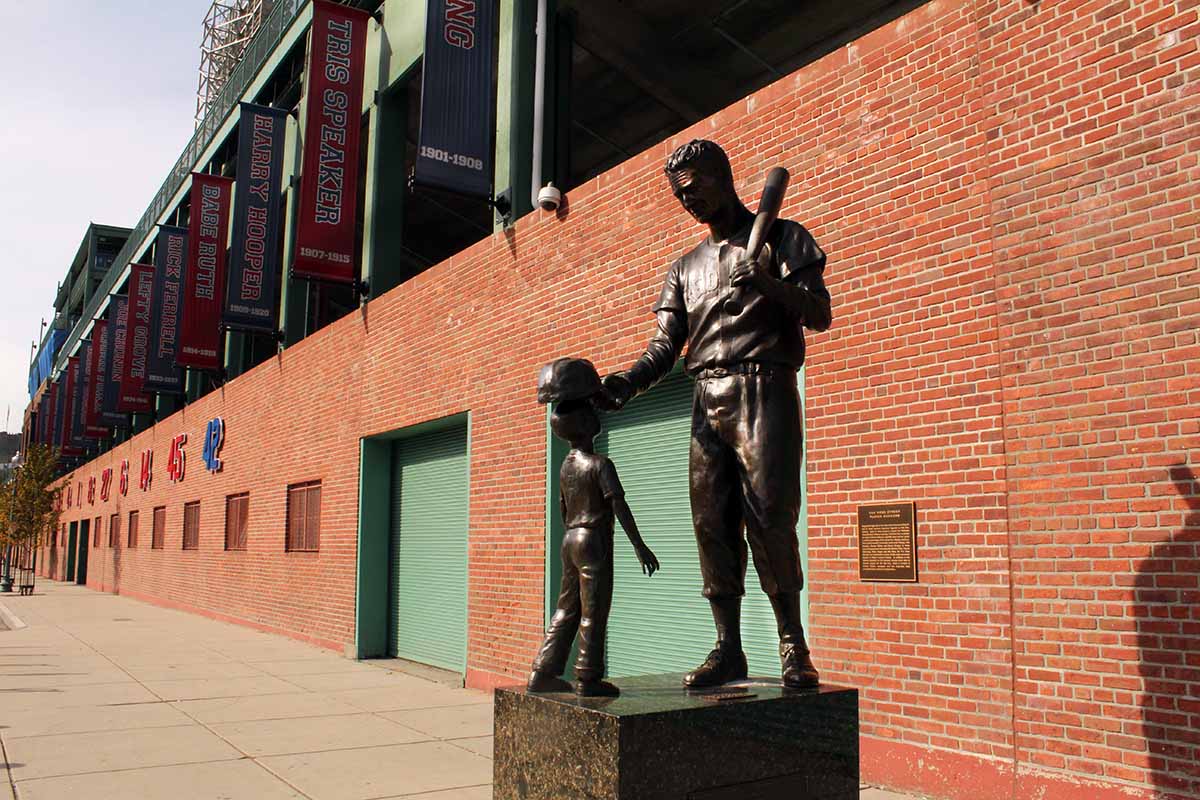
A bronze Ted Williams places a cap on the head of a small child. / Photo by Anna Buckley
Create your own walking tour of public art from the MFA to Fenway Park with our map:


